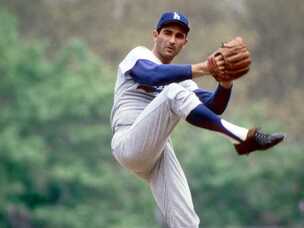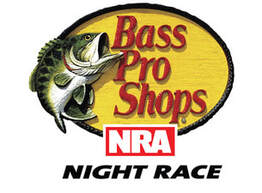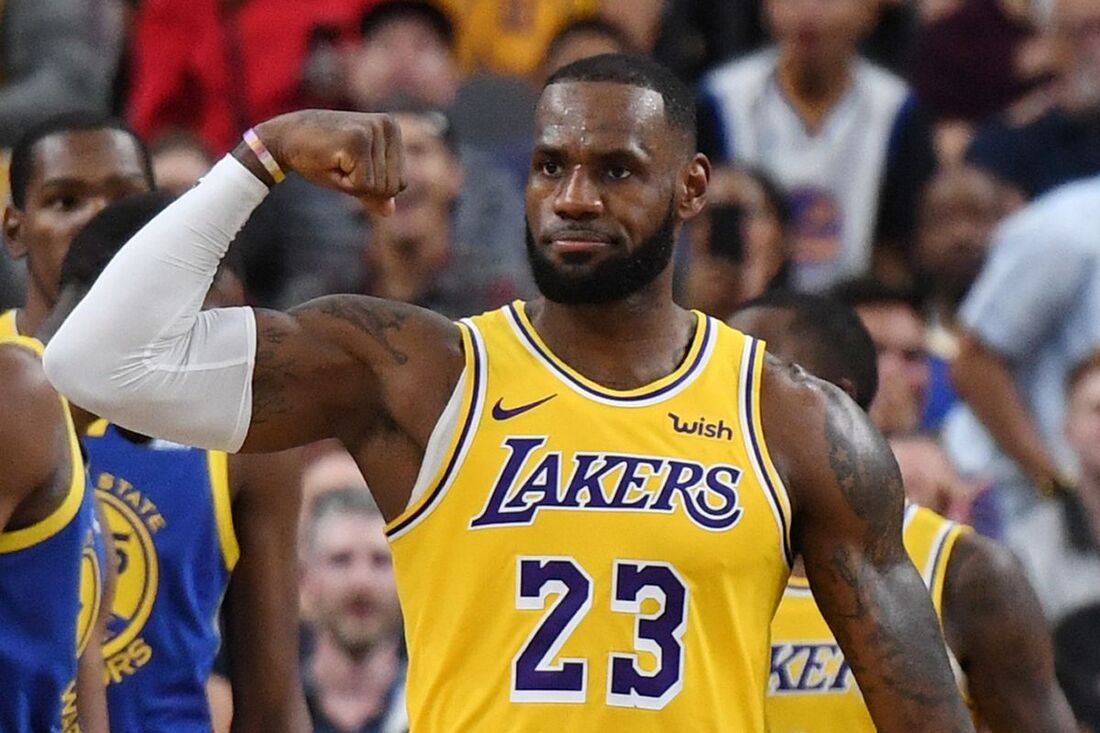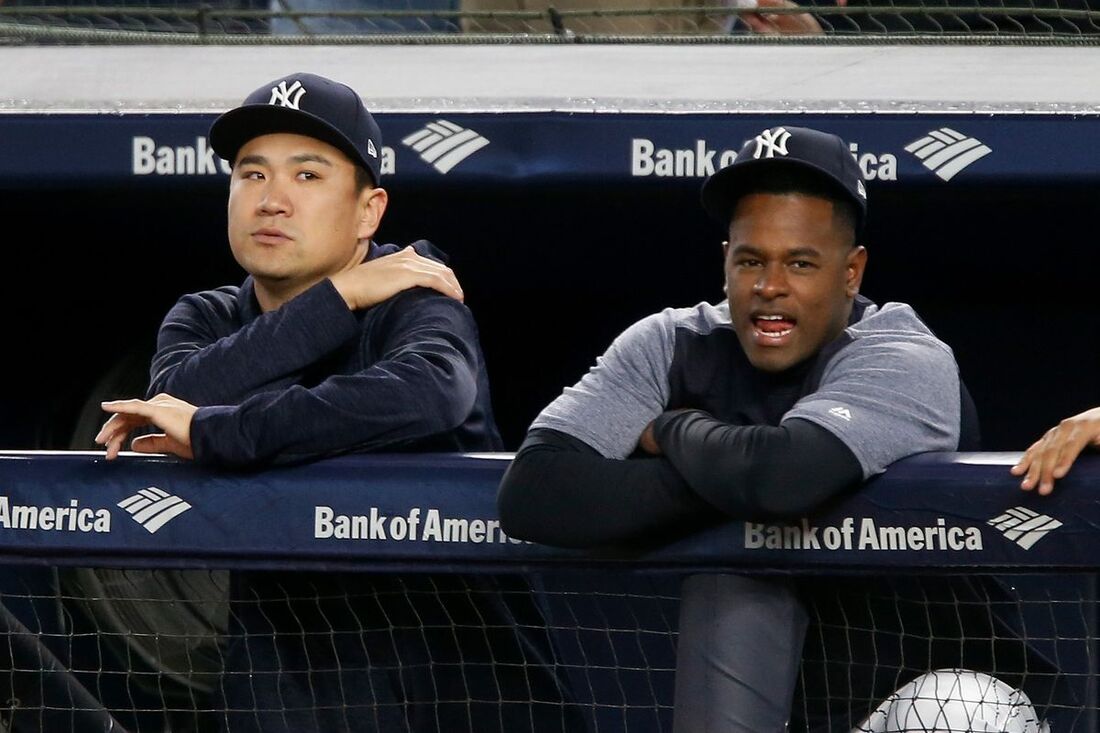 by Julian Spivey When Indianapolis Colts quarterback Andrew Luck stunned the sports world on Saturday, August 24 by announcing his retirement at the age of 29 it started a conversation of the most shocking early retirements in the history of sports. Luck’s retirement is certainly shocking due to his age and his stature in the game as likely one of the NFL’s five best quarterbacks, but the recent focus on the game’s injuries might make decisions like the one made by Luck over the weekend more commonplace. Among the shocking early retirements that many brought up after Luck’s decision where two of the greatest running backs in NFL history: Jim Brown’s decision to focus on a Hollywood acting career retiring from the Cleveland Browns at 30 years old as the league’s all-time leading rusher and Barry Sanders decision in 1999 to retire at 31 less than 1,500 yards away from Walter Payton’s all-time rushing record at the time. Then you have the early retirements of Michael Jordan and Magic Johnson in the NBA, both of whom eventually returned to the league, though with Jordan having much more time and success. Jordan’s retirement followed the murder of his father and his interest in playing professional baseball. Johnson’s was health related after contracting HIV. But, of all of the shocking sports retirements many are forgetting about the time when the best pitcher in Major League Baseball, perhaps the greatest to ever set perch upon a pitching mound, Sandy Koufax walked away from the game at the height of his career in 1966 at the age of 30 (the same age and year Jim Brown called it quits). Koufax had been the game’s most dominant pitcher throughout the early-to-mid 1960s for the Los Angeles Dodgers after beginning in the late ‘50s with the team in Brooklyn to average success. Through the first seven full seasons of his career (more than half of it in total) Koufax was only 54-53 with an ERA more than a full run higher than what his final tally would be. The combination of entering a pitcher friendly Dodgers Stadium in 1962, his previous L.A. home at the Los Angeles Coliseum had a left field line that was a measly 250-feet from home plate, Dodgers scout Kenny Myers fixing a hitch in his wind-up and MLB expanding the strike zone in 1963 Koufax became a completely different pitcher. From 1962 through his final season of 1966 Koufax would lead the National League every season in ERA with a career best of 1.73 coming in his final season. It would be the third time in a four year span he would have an ERA under 2.00, and the year that it was above it was barely at 2.04. Koufax had gone from a .500 career pitcher over the first part of his career to a 111-34 record over the last five years of his career, winning a career high 27 games in the final season of his career. In the final four years of his career Koufax would win the Cy Young Award in the N.L. three times, including a Most Valuable Player award in 1963. He would also lead the N.L. in strikeouts in three of those seasons topping 300 Ks every time. Koufax led the Dodgers to World Series titles in 1963 and 1965, winning the MVP of the series both times. He would go 4-1 in those World Series appearances. His final game in the league would be in losing fashion against the Baltimore Orioles in the 1966 World Series, which the Orioles would go on to win, but he pitched well only allowing one earned run in six innings. It was his third start in just eight days. His career World Series ERA was 0.95. Koufax threw four no-hitters, the second most all-time in MLB history behind Nolan Ryan’s seven, during his career and a perfect game against the Chicago Cubs on September 9, 1965. There’s no telling how many more no-nos he might have thrown had he pitched into his 30s. Koufax had been pitching through pain over the last two years of his career, despite those being arguably the two finest seasons he’d ever pitch. He was told by a doctor after a spring training outing in 1965 that left his arm black and blue and hemorrhaging that he’d eventually lose use of his arm. He would doctor himself with numerous medications, shots and balms just to get through his outings. After the 1966 season he decided enough was enough and to walk away from the game while he could still feel and use his arm. When it comes down to it Koufax was leaving the game back then for the same reasons Luck is leaving the gridiron now. He wanted a life after his career in which he wasn’t completely destroyed by pain. He left baseball on his own terms, but still at the top of his game … leaving the rest of us to wonder just what else he could’ve done in his legendary career.
0 Comments
 by Julian Spivey Today marks two weeks since one of the most devastating gun-related days of violence in the history of our country and few, if any, seem to be talking about how one of this weekend’s biggest sporting events – the NASCAR Monster Energy Cup Series event at Bristol Motor Speedway is being co-sponsored by Bass Pro Shops and the National Rifle Association. Multiple times on this very website I’ve called for NASCAR to cut ties with the NRA, most recently in February of last year when the sport’s biggest race the Daytona 500 took place just days after the tragedy in Parkland, Fla. The sport continues to take the NRA’s money and support the organization, of which NASCAR team owner Richard Childress is the Vice President, with sights set on being its future President. Allowing the NRA to sponsor a major race just 14 days after another one of our country’s many mass shootings is a bad look for the sport. Here is the article originally posted in February of 2018: Flags flew at half-mast at Daytona International Speedway in Daytona Beach, Fla. last Sunday during the 60th running of the Daytona 500 just over a three-hour drive north of Parkland, Fla. where 17 students and faculty had been gunned down a few days before in one of the worst school shootings in American history. Parkland victims and survivors were in the prayers of those at the speedway all weekend during the prerace invocations.
Austin Dillon would go on to win the Daytona 500 that day. One of his sponsors is the National Rifle Association (NRA), which thankfully wasn’t on his car that day. Imagine how that would’ve looked. The reigning NASCAR Monster Energy Cup Series champion Martin Truex Jr. is also occasionally sponsored by the NRA. The NRA also is set to sponsor the August race at Bristol Motor Speedway once again this season and has sponsored races at Texas Motor Speedway before. The sport of NASCAR depends on sponsorship for survival maybe more than any other professional sport in the country, but they can be picky about what brands they allow to associate with the sport. Journeyman racer Carl Long found this out the tough way last season when NASCAR made the driver’s team remove decals for the company Veedverks from his No. 66 car. Veedverks is a hemp vape shop based in Colorado. NASCAR takes issue with a legal (in Colorado) hemp vape shop but is OK with the NRA – a group that some people refer to as an American terrorist organization. The same NRA that donated $10,000 to the Marjory Stoneman Douglas High School’s four-person varsity marksmanship team, in 2016. Parkland shooter Nikolas Cruz was on that team and honed the very skills needed to perpetrate the tragedy at his school. The NRA that seemingly proves time and time again it cares more about the sale of firearms than people killed by AR-15s, which should be used for military purposes and nothing else. NASCAR has never taken issue with the NRA as a race or team sponsor before, and the topic has come up before. In 2013, just months after 26 people were killed at Sandy Hook in Newton, Ct. the sport announced the NRA would sponsor a spring race at Texas Motor Speedway. NASCAR simply distanced itself from the decision with spokesman David Higdon saying, “Texas Motor Speedway ultimately secured this entitlement sponsor, not NASCAR.” After that season NASCAR instituted a new clause in its sanction agreements stating that it had to approve race sponsors, according to ESPN. Two years later the NRA was back as a race sponsor at Bristol, where it’ll serve as sponsor for a third consecutive year in August. NASCAR didn’t say no. This time they also didn’t comment. NASCAR team owner and NRA Second Vice President Richard Childress did, praising the sponsorship deal. He said: “So many fans are supporters of the NRA. They [NASCAR/Bristol Motor Speedway] made the right decision putting the NRA back in because so many of our fans are NRA members.” There’s little doubt that many NASCAR fans are NRA supporters, but that doesn’t make it a right decision by the sport or a decision that looks good upon it. I’m sure a lot of NASCAR fans support marijuana, as well. I’m sure a lot of NASCAR fans are also supporters of Playboy magazine, which has been rejected as a sponsor multiple times for not being “representative of the image of NASCAR,” according to USA Today. Pot and naked ladies aren’t good for the sport’s image, but high-powered machines of death are fine. NASCAR should reconsider its relationship with the NRA, but it’d be highly surprising if they did. In the last few days many companies have felt the heat from people claiming they would no longer support them if they didn’t cut ties with the NRA. In response companies like Enterprise, Alamo, National and First National Bank of Omaha have already cut ties. Other companies like FedEx, LifeLock, Hertz and Norton Online are being pressured, as well. Nobody seems to be putting any pressure on NASCAR, probably because they view it to be a lost cause. Like I said, it probably would be. But, it’s still worth the fight. Who knows maybe NASCAR will decide to do something just because it’s the right thing to do? They lowered their flags and said they’re prayers in Daytona. But, as long as they’re taking the NRA’s money and giving them a sales boost by placing their companies on their cars, races and tracks they aren’t doing enough. If LeBron James wins two titles over the next three years in L.A., where would you rank him on the list of all-time Laker greats? - Charles B. That’s a great and interesting question Charles. Thank you.
The problem here is that the Los Angeles Lakers are one of the most storied franchises, not just in the NBA, but in any professional sports league. They have so many legendary players in their illustrious history that you could put together a starting five and still be leaving out an all-time great. That’s the problem facing LeBron James, who I wouldn’t argue with someone if they told me was the greatest player in NBA history, in your scenario. Even if James were to lead his Lakers team to two titles in the next three seasons, which is a big if I don’t believe he’d be a top-5 all-time Lakers player. The Lakers easily have two of the 10 greatest players of all-time in NBA history in Magic Johnson and Kareem Abdul-Jabbar. Both won five championships with the team and each won three MVPs with the team. Shaquille O’Neal and Kobe Bryant are arguably top-10 all-time NBA players or borderline top-10 NBA players of all-time. Bryant, like Johnson and Abdul-Jabbar, also won five titles with the team. Shaq won three consecutive titles with the team. Kobe and Shaq each won an MVP in Los Angeles. So, even if LeBron can win two titles in three years with the Lakers he’s automatically still behind these four players. Then you have Mr. Laker Jerry West. West is such an iconic player with the Lakers and in the NBA that he’s literally the logo for the NBA. He only won one championship with the Lakers, mostly because they had to go up against the greatest force in pro sports history in the Boston Celtics of the 1960s, but even though in your scenario LeBron would have won more titles than West with the Lakers I couldn’t in good conscious rank him higher all-time as a Laker than West with such less time in a Lakers jersey. At best I’d say LeBron would be the sixth greatest Los Angeles Lakers player of all-time, but even that seems like a bit of a slap in the face to Elgin Baylor. LBJ will have to settle for his no. 23 in the rafters in L.A. and being the greatest player in franchise history for the Cleveland Cavaliers. -Julian Spivey by Julian Spivey The Major League Baseball Trade Deadline, which is now a hard deadline with baseball no longer allowing waiver deals throughout the month of August, was fairly exciting with a flurry of deals going down to the wire on Wednesday, July 31 despite many of the biggest names not trading jerseys. There was one big name dealt at the very last second – ace Zack Greinke going from the Arizona Diamondbacks to the Houston Astros in a deal that mirrors what the Astros were able to pull off two summers ago when they acquired Justin Verlander from the Detroit Tigers and rode him all the way to their first ever World Series title. Here are the winners and losers of the 2019 MLB Trade Deadline: WINNERS: Houston Astros The Astros are clearly the biggest winners of the trade deadline getting an ace of a starting pitcher in Greinke to go along with he other two aces they already have in Verlander and Gerrit Cole. Scoring runs on the Astros in the postseason is going to be very hard and that’s a problem for the rest of baseball considering the offense is among the best in the game, as well. I know you still have to play the games, but I really believe the Astros just clinched their second title in three years with this deal. Adding icing to their cake the additions of another starting pitcher in Aaron Sanchez (who’s better than his 2019 numbers suggest) and a reliever in Joe Biagini (3.78 ERA) from the Toronto Blue Jays just bolsters their pen for the postseason. Atlanta Braves The one glaring hole the Atlanta Braves have faced all season is their bullpen. As long as they could address that they would end up on this winners list and, boy, did they ever address it. They added an all star closer in Shane Greene (1.18 ERA and 22 saves) from the Detroit Tigers, a former all star closer in Mark Melancon (3.50 ERA) from the San Francisco Giants and Chris Martin from the Texas Rangers, who’s had a great K/BB ratio this season and walks have been a huge issue for the Braves ‘pen. The fact that Greene and Melancon aren’t rentals and the Braves only had to give up prospects, and not their biggest ones either, just adds to the winning in their deadline deals. New York Mets The New York Mets and what they were going to do with their pitching staff was the bulk of the discussion leading up to the trade deadline with many believing they would trade either Noah Syndergaard or Zack Wheeler, if not both. They wound up somewhat surprisingly not trading either. In fact, the Mets decided to add to their rotation at the deadline acquiring the Toronto Blue Jays ace Marcus Stroman, who had a top five ERA this season playing in the high-powered offense American League East Division. At 53-55 the Mets are probably out of contention the rest of this season (although we that second Wild Card it’s too early to say for certain), but to have a starting rotation of Jacob deGrom, Syndergaard, Stroman, Wheeler and Steven Matz next season should put fear into the hitters of the National League. Cleveland Indians The Cleveland Indians were a part of a three-team deal with the Cincinnati Reds and San Diego Padres the day before the trade deadline that got them a couple of good bats for the playoff stretch and one of those bats who should be their power hitting designated hitter for a while. They received Yasiel Puig from the Reds and Franmil Reyes from the Padres. Reyes is a 24-year old monster of a hitter who’s already on pace to hit 40 or more homers in his first full MLB season this year. The addition of him to this lineup for the foreseeable future is major. Trading Trevor Bauer to the Reds could hurt their rotation, especially if their injured stars can’t return well, but in the long run the deal should prove to be well worth it. LOSERS: New York Yankees The only thing of significance the New York Yankees were able to do before the trade deadline came over a month ago when they acquired power hitting designated hitter Edwin Encarnacion from the Seattle Mariners. What the team really needed was to add a pitcher to their rotation for the postseason and they failed miserably. They desperately wanted Zack Greinke from the Diamondbacks, but just couldn’t make it work and the Astros could … that’s going to hurt big time, especially if the two teams matchup in October. Boston Red Sox General Managers of the American League East Division just were not getting the job done going into the end of the trade deadline on Wednesday. The reigning champion Boston Red Sox currently sit third in the A.L. East at 10 games behind the Yankees and if the playoffs began today they’d be at home watching from their couches. The Red Sox desperately needed some bullpen help and there were plenty of bullpen arms to be had, hell the Braves acquired three within a 24 hour span, but the Red Sox basically stayed pat and because of it may end up staying put in third place. Los Angeles Dodgers OK, so I’m putting the Dodgers on the losers list because they didn’t do much at the trade deadline and we’ve been accustomed to them making some of the splashiest deal like acquiring Manny Machado from the Baltimore Orioles last season and Yu Darvish from the Texas Rangers the year before that. But even though the biggest name they acquired was utility infielder Jedd Gyorko from the St. Louis Cardinals the Dodgers are still easily the best team in the National League. |
Archives
July 2024
|



